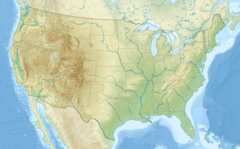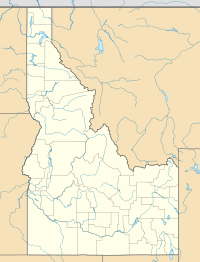Camp Rupert facts for kids
Camp Rupert was an important place in Idaho during World War II. It was a special camp built to hold prisoners of war (POWs) from countries like Italy and Germany. The camp was located in Minidoka County, Idaho, near the town of Paul.
Contents
Camp Rupert: A WWII Prisoner Camp in Idaho
What Was Camp Rupert?
Camp Rupert was built very quickly for about $1.5 million. This amount covered everything needed for a small city of 3,000 people. It included living areas called barracks, a water system, a sewer system, and even a hospital.
The first prisoners arrived in May 1944. These were soldiers from Italy. Later, in September of the same year, about 500 German soldiers also arrived at the camp.
The camp was in an area known as the Magic Valley. This area had lots of farms that used water from rivers to grow crops. The camp was about 4,200 feet (1,280 meters) above sea level.
Life and Work at the Camp
The prisoners at Camp Rupert were often sent out to help with farming. They would plant or harvest crops in the fields. Farmers would ask for the POWs' help.
The prisoners were taken from the camp to the fields in trucks. About 15 prisoners would ride in each truck with one guard. Once at the farm, the farmer would be in charge of guarding the prisoners.
Working for Farmers
Farmers and a group called the War Labor Board would set a goal for how much work the prisoners needed to do. To help the prisoners understand their tasks, information was given to them in German. This included special papers and even a film made by a sugar company.
Sometimes, farmers found it hard to guard the prisoners and do their own farm work at the same time. This led to some complaints.
How the Camp Was Managed
Camp Rupert was managed by Fort Douglas in Utah. It was also a place where prisoners who had caused trouble at other camps were sent. This included prisoners who had tried to protest or those who had tried to escape and were caught.
By December 1945, there were hundreds of prisoners who had been part of special German army groups. It's thought that about 15,000 prisoners were connected to Camp Rupert at different times.
Challenges and Changes
After the war in Europe ended in May 1945, the work for the prisoners became much harder. Also, it became difficult to get enough food to the camp, so meals were often small.
As people learned more about the harsh realities of the war, the camp staff became less patient with the prisoners. Prisoners who didn't finish their work goals were sometimes threatened. Their free time activities were also greatly reduced.
Tough Times and Protests
At one point, prisoners at a smaller camp in Wyoming went on strike. They were unhappy because their rides to the fields were bad and their barracks roofs leaked. In the summer of 1945, 297 prisoners at Camp Rupert also went on strike. They felt the work conditions were too difficult.
In October 1945, Camp Rupert was responsible for 15,047 prisoners. Many prisoners stayed in the United States even after the war ended. This was because there weren't enough workers in the U.S. They didn't return to Europe until after the harvest season in the fall of 1946.
Camp Rupert's Legacy
Another camp, the Farragut Naval Training Station in northern Idaho, also held several hundred prisoners of war.
The Minidoka War Relocation Center was about 20 miles (32 km) west of Camp Rupert. This was a different kind of camp where Japanese Americans were held during the war.



